
Keywords: review

|
Symbiotic Wolbachia in mosquitoes and its role in reducing the transmission of mosquito-borne diseases: updates and prospectsA. Minwuyelet, G. P. Petronio, D. Yewhalaw, A. Sciarretta, I. Magnifico, D. Nicolosi, R. Di Marco and G. Atenafu, Frontiers in Microbiology, 14. 2023.
Mosquito-borne diseases such as malaria, dengue fever, West Nile virus, chikungunya, Zika fever, and filariasis have the greatest health and economic impact. These mosquito-borne diseases are a major cause of morbidity and mortality in tropical and sub-tropical areas. Due to the ... Keywords: cytoplasmic incompatibility, mechanisms, review, wolbachia |

|
Genetic conflict and the origin of multigene families: implications for sex chromosome evolutionE. Martí and A. M. Larracuente, Proceedings of the Royal Society B: Biological Sciences, 290:20231823. 2023.
Sex chromosomes are havens for intragenomic conflicts. The absence of recombination between sex chromosomes creates the opportunity for the evolution of segregation distorters: selfish genetic elements that hijack different aspects of an individual's reproduction to increase ... Keywords: cytoplasmic incompatibility, mechanisms, review, wolbachia |

|
Supergenes as drivers of ant evolutionM. Chapuisat, Myrmecological News, 33:1-18. 2023.
Ants show striking diversity in social organization, raising major questions on the proximate and ultimate causes of such variation. The shift from one-queen (= monogyne) societies to multi-queen (= polygyne) societies has long been viewed as a phenotypically plastic response to ... Keywords: cytoplasmic incompatibility, mechanisms, review, wolbachia |

|
Using Wolbachia to control rice planthopper populations: progress and challengesY. Guo, J. Shao, Y. Wu and Y. Li, Frontiers in Microbiology, 14. 2023.
Wolbachia have been developed as a tool for protecting humans from mosquito populations and mosquito-borne diseases. The success of using Wolbachia relies on the facts that Wolbachia are maternally transmitted and that Wolbachia-induced cytoplasmic incompatibility provides a ... Keywords: cytoplasmic incompatibility, mechanisms, review, wolbachia |

|
New perspectives on the causes and consequences of male meiotic driveCourret, Cécile Wei, Xiaolu Larracuente, Amanda M., Current Opinion in Genetics & Development, 2023.
Gametogenesis is vulnerable to selfish genetic elements that bias their transmission to the next generation by cheating meiosis. These so-called meiotic drivers are widespread in plants, animals, and fungi and can impact genome evolution. Here, we summarize recent progress on the ... Keywords: cytoplasmic incompatibility, mechanisms, review, wolbachia |

|
Female meiotic drive in plants: mechanisms and dynamicsF. Finseth, Current Opinion in Genetics and Development, 82:102101. 2023.
Female meiosis is fundamentally asymmetric, creating an arena for genetic elements to compete for inclusion in the egg to maximize their transmission. Centromeres, as mediators of chromosomal segregation, are prime candidates to evolve via ‘female meiotic drive’. According to ... Keywords: cytoplasmic incompatibility, mechanisms, review, wolbachia |

|
Proliferation and dissemination of killer meiotic drive lociE. C. Lai and A. A. Vogan, Current Opinion in Genetics and Development, 82:102100. 2023.
Killer meiotic drive elements are selfish genetic entities that manipulate the sexual cycle to promote their own inheritance via destructive means. Two broad classes are sperm killers, typical of animals and plants, and spore killers, which are present in ascomycete fungi. Killer ... Keywords: cytoplasmic incompatibility, mechanisms, review, wolbachia |

|
Paternal genome elimination: patterns and mechanisms of drive and silencingM. Herbette and L. Ross, Current Opinion in Genetics and Development, 81. 2023.
In thousands of arthropod species, males inherit, but subsequently eliminate the entire haploid genome of their father. However, why this peculiar reproductive strategy evolved repeatedly across diverse species and what mechanisms are involved in paternal genome elimination (PGE) ... Keywords: cytoplasmic incompatibility, mechanisms, review, wolbachia |

|
Do sex-linked male meiotic drivers contribute to intrinsic hybrid incompatibilities? Recent empirical studies from flies and rodentsJ. Kitano and K. Yoshida, Current Opinion in Genetics and Development, 81:102068. 2023.
Intrinsic hybrid incompatibility is one of the important isolating barriers between species. In organisms with sex chromosomes, intrinsic hybrid incompatibility often follows two rules: Haldane’s rule and large-X effects. One explanation for these two rules is that sex ... Keywords: cytoplasmic incompatibility, mechanisms, review, wolbachia |

|
Molecular Biology of Cytoplasmic Incompatibility Caused by Wolbachia EndosymbiontsM. Hochstrasser, Annual Review of Microbiology, 2023.
Among endosymbiotic bacteria living within eukaryotic cells, Wolbachia is exceptionally widespread, particularly in arthropods. Inherited through the female germline, it has evolved ways to increase the fraction of bacterially infected offspring by inducing parthenogenesis, ... Keywords: cytoplasmic incompatibility, mechanisms, review, wolbachia |

|
Mosquito gene targeted RNAi studies for vector controlM. Yadav, N. Dahiya and N. Sehrawat, Functional and Integrative Genomics, 23:180. 2023.
Vector-borne diseases are serious public health concern. Mosquito is one of the major vectors responsible for the transmission of a number of diseases like malaria, Zika, chikungunya, dengue, West Nile fever, Japanese encephalitis, St. Louis encephalitis, and yellow fever. ... Keywords: cytoplasmic incompatibility, mechanisms, review, wolbachia |

|
Adaptation in the face of internal conflict: the paradox of the organism revisitedM. M. Patten, M. A. Schenkel and J. A. Ågren, Biological Reviews, 2023.
The paradox of the organism refers to the observation that organisms appear to function as coherent purposeful entities, despite the potential for within-organismal components like selfish genetic elements and cancer cells to erode them from within. While it is commonly accepted ... Keywords: cytoplasmic incompatibility, mechanisms, review, wolbachia |

|
Leveraging eco-evolutionary models for gene drive risk assessmentM. A. Combs, A. J. Golnar, J. M. Overcash, A. L. Lloyd, K. R. Hayes, D. A. O’Brochta and K. M. Pepin, Trends in Genetics, 2023.
As development of gene drive systems accelerates and diversifies, predicting outcomes for target populations and the potential for human and environmental risks requires accounting for numerous eco-evolutionary processes.Gene drive dynamic models quantify the influence of ... Keywords: cytoplasmic incompatibility, mechanisms, review, wolbachia |

|
Leveraging eco-evolutionary models for gene drive risk assessmentM. A. Combs, A. J. Golnar, J. M. Overcash, A. L. Lloyd, K. R. Hayes, D. A. O’Brochta and K. M. Pepin, Trends in Genetics, 2023.
As development of gene drive systems accelerates and diversifies, predicting outcomes for target populations and the potential for human and environmental risks requires accounting for numerous eco-evolutionary processes.Gene drive dynamic models quantify the influence of ... Keywords: cytoplasmic incompatibility, mechanisms, review, wolbachia |

|
Probing “Selfish” Centromeres Unveils an Evolutionary Arms RaceM. Lampson, The Scientist, 2023.
The so-called Robertsonian (Rb) fusions that led to these rapid karyotype changes are relatively common chromosomal rearrangements. But their accumulation in the populations of Madeira Island and in multiple other isolated mouse populations elsewhere is likely due to another ... Keywords: cytoplasmic incompatibility, mechanisms, review, wolbachia |
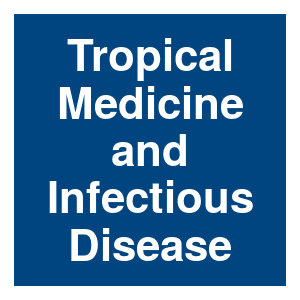
|
The Promise and Challenge of Genetic Biocontrol Approaches for Malaria EliminationS. James and M. Santos, Tropical Medicine and Infectious Disease, 2023.
Malaria remains an ongoing public health challenge, with over 600,000 deaths in 2021, of which approximately 96% occurred in Africa. Despite concerted efforts, the goal of global malaria elimination has stalled in recent years. This has resulted in widespread calls for new ... Keywords: cytoplasmic incompatibility, mechanisms, review, wolbachia |

|
CRISPR-based genetic control strategies for insect pestsY. Yan, R. A. Aumann, I. Hacker and M. F. Schetelig, Journal of Integrative Agriculture, 22:651-668. 2023.
Genetic control strategies such as the sterile insect technique have successfully fought insect pests worldwide. The CRISPR (clustered regularly interspaced short palindromic repeats) technology, together with high-quality genomic resources obtained in more and more species, ... Keywords: cytoplasmic incompatibility, mechanisms, review, wolbachia |

|
How genomics can help biodiversity conservationK. Theissinger, C. Fernandes, G. Formenti, I. Bista, P. R. Berg, C. Bleidorn, A. Bombarely, A. Crottini, G. R. Gallo, J. A. Godoy, S. Jentoft, J. Malukiewicz, A. Mouton, R. A. Oomen, S. Paez, P. J. Palsbøll, C. Pampoulie, M. J. Ruiz-López, S. Secomandi, H, Trends in Genetics, 2023.
Genomics provides effective tools to characterize biodiversity, but the full implementation of genomic techniques in practical conservation is still limited. We review some of the main approaches in biodiversity genomics available to conservationists and genomicists.High-quality, ... Keywords: cytoplasmic incompatibility, mechanisms, review, wolbachia |
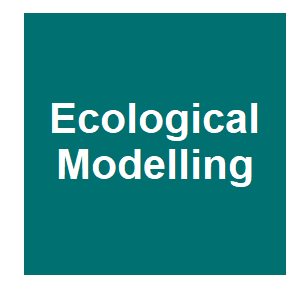
|
Review of gene drive modelling and implications for risk assessment of gene drive organismsJ. L. Frieß, C. R. Lalyer, B. Giese, S. Simon and M. Otto, Ecological Modelling, 478:110285. 2023.
Synthetic gene drive (GD) systems constitute a form of novel invasive environmental biotechnology with far-reaching consequences beyond those of other known genetically modified organisms (GMOs). During the last 10 years, the development of GD systems has been closely linked to ... Keywords: cytoplasmic incompatibility, mechanisms, review, wolbachia |

|
The Possibilities of Gene Drives for Managing Populations and Controlling DiseasesJ. Vijay Upadhye, U. N. Shah and B. Mudhol, Salud, Ciencia y Tecnologia, 3. 2023.
The technical limitations and the use of gene drives to address ecological problems by modifying all populations of wild species remain primarily speculative. Here, we examine the possibility that RNA-guided gene drives based on the CRISPR nuclease Cas9 could be used as an ... Keywords: cytoplasmic incompatibility, mechanisms, review, wolbachia |

|
Use of Insect Promoters in Genetic Engineering to Control Mosquito-Borne DiseasesV. Bottino-Rojas and A. A. James, Biomolecules, 13. 2022.
Mosquito transgenesis and gene-drive technologies provide the basis for developing promising new tools for vector-borne disease prevention by either suppressing wild mosquito populations or reducing their capacity from transmitting pathogens. Many studies of the regulatory DNA ... Keywords: cytoplasmic incompatibility, mechanisms, review, wolbachia |
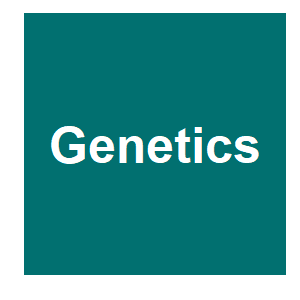
|
Driving lessons: a brief (personal) history of centromere driveH. S. Malik, Genetics, 2022.
Meiosis is an important specialized cell division in many eukaryotic species, including fungi, plants, and animals. Meiosis results in the production of haploid gametes starting from a diploid cell via 1 round of replication and 2 rounds of cell division. In an influential ... Keywords: cytoplasmic incompatibility, mechanisms, review, wolbachia |
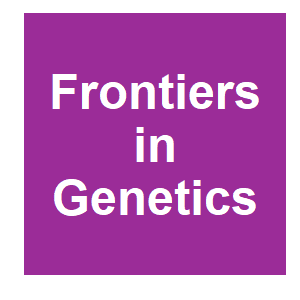
|
Driving down malaria transmission with engineered gene drivesW. T. Garrood, P. Cuber, K. Willis, F. Bernardini, N. M. Page and R. E. Haghighat-Khah, Frontiers in Genetics, 13. 2022.
The last century has witnessed the introduction, establishment and expansion of mosquito-borne diseases into diverse new geographic ranges. Malaria is transmitted by female Anopheles mosquitoes. Despite making great strides over the past few decades in reducing the burden of ... Keywords: cytoplasmic incompatibility, mechanisms, review, wolbachia |

|
Mosquito Gene Drives and the Malaria Eradication AgendaEditor: R. Carballar-Lejarazu,, Jenny Stanford Publishing, 2022.
Malaria is one of most serious infectious diseases today and has afflicted humankind for thousands of years. A significant number of people still die from this mosquito-borne disease, despite the use of various malaria prevention and control methods over hundreds of years and ... Keywords: cytoplasmic incompatibility, mechanisms, review, wolbachia |
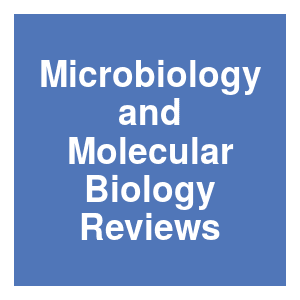
|
Enforcement of Postzygotic Species Boundaries in the Fungal KingdomJ. Y. Chou, P. C. Hsu and J. Y. Leu, Microbiology and Molecular Biology Reviews, 2022.
Understanding the molecular basis of speciation is a primary goal in evolutionary biology. The formation of the postzygotic reproductive isolation that causes hybrid dysfunction, thereby reducing gene flow between diverging populations, is crucial for speciation. Using various ... Keywords: cytoplasmic incompatibility, mechanisms, review, wolbachia |
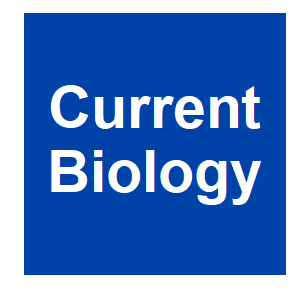
|
Transposable elementsA. Hayward and C. Gilbert, Current Biology, 32:R904-r909. 2022.
Transposable elements are known by many names, including 'transposons', 'interspersed repeats', 'selfish genetic elements', 'jumping genes', and 'parasitic DNA', but here we will refer to them simply as transposable elements. Many biologists will have heard of transposable ... Keywords: cytoplasmic incompatibility, mechanisms, review, wolbachia |

|
How to Exterminate the Invaders: Playing Dangerously with the Pandora’s Box of Genetic EngineeringSpivey, Czechia Posts English, 2022.
Man has dragged alien species to new continents, sometimes inadvertently and often intentionally. That’s how she got from America to Europe Musk Muskrat (Ondatra zibethicus) whose nutria (Myocastor coypus). He traveled in the opposite direction across the Atlantic, for example ... Keywords: cytoplasmic incompatibility, mechanisms, review, wolbachia |

|
Applications of gene drive systems for population suppression of insect pestsM. Asad, D. Liu, J. Chen and G. Yang, Bulletin of Entomological Research, 2022.
Population suppression is an effective way for controlling insect pests and disease vectors, which cause significant damage to crop and spread contagious diseases to plants, animals and humans. Gene drive systems provide innovative opportunities for the insect pests population ... Keywords: cytoplasmic incompatibility, mechanisms, review, wolbachia |
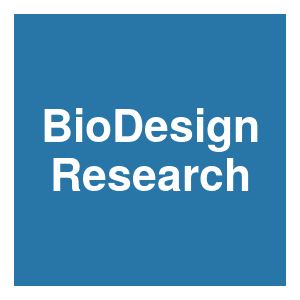
|
Reflection on the Challenges, Accomplishments, and New Frontiers of Gene DrivesM. Melesse Vergara, J. Labbé and J. Tannous, BioDesign Research, 2022:9853416. 2022.
Ongoing pest and disease outbreaks pose a serious threat to human, crop, and animal lives, emphasizing the need for constantgenetic discoveries that could serve as mitigation strategies. Gene drives are genetic engineering approaches discovered decadesago that may allow quick, ... Keywords: cytoplasmic incompatibility, mechanisms, review, wolbachia |

|
Meiotic drive in house mice: mechanisms, consequences, and insights for human biologyU. P. Arora and B. L. Dumont, Chromosome Research, 2022.
Meiotic drive occurs when one allele at a heterozygous site cheats its way into a disproportionate share of functional gametes, violating Mendel's law of equal segregation. This genetic conflict typically imposes a fitness cost to individuals, often by disrupting the process of ... Keywords: cytoplasmic incompatibility, mechanisms, review, wolbachia |
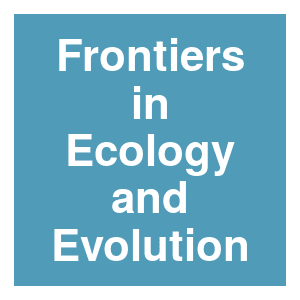
|
Natural and Engineered Sex Ratio Distortion in InsectsA. Compton and Z. Tu, Frontiers in Ecology and Evolution, 10. 2022.
Insects have evolved highly diverse genetic sex-determination mechanisms and a relatively balanced male to female sex ratio is generally expected. However, selection may shift the optimal sex ratio while meiotic drive and endosymbiont manipulation can result in sex ratio ... Keywords: cytoplasmic incompatibility, mechanisms, review, wolbachia |
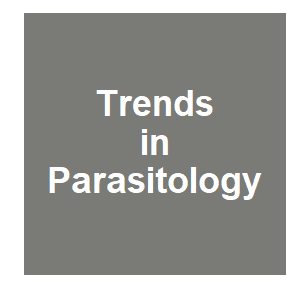
|
Selective targeting of biting females to control mosquito-borne infectious diseasesB. B. Kojin, A. Compton, Z. N. Adelman and Z. Tu, Trends in Parasitology, 2022.
Mosquitoes are vectors for a number of infectious diseases. Only females feed on blood to provision for their embryos and, in doing so, transmit pathogens to the associated vertebrate hosts. Therefore, sex is an important phenotype in the context of genetic control programs, both ... Keywords: cytoplasmic incompatibility, mechanisms, review, wolbachia |

|
Active genetics comes aliveV. M. Gantz and E. Bier, BioEssays, 2022.
Abstract Clustered Regularly Interspaced Short Palindromic Repeats (CRISPR)-based ?active genetic? elements developed in 2015 bypassed the fundamental rules of traditional genetics. Inherited in a super-Mendelian fashion, such selfish genetic entities offered a variety of ... Keywords: cytoplasmic incompatibility, mechanisms, review, wolbachia |
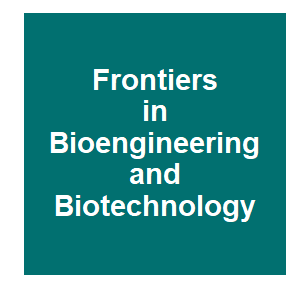
|
Gene Editing and Genetic Control of Hemipteran Pests: Progress, Challenges and PerspectivesI. D. Pacheco, L. L. Walling and P. W. Atkinson, Frontiers in Bioengineering and Biotechnology, 10. 2022.
The origin of the order Hemiptera can be traced to the late Permian Period more than 230 MYA, well before the origin of flowering plants 100 MY later in during the Cretaceous period. Hemipteran species consume their liquid diets using a sucking proboscis; for phytophagous ... Keywords: cytoplasmic incompatibility, mechanisms, review, wolbachia |

|
Non-Mendelian segregation and transmission drive of B chromosomesJ. P. M. Camacho, Chromosome Research, 2022.
Selfish genetic elements (SGE) get a transmission advantage (drive) thanks to their non-Mendelian inheritance. Here I identify eight steps during the reproductive cycle that can be subverted by SGEs to thrive in natural populations. Even though only three steps occur during ... Keywords: cytoplasmic incompatibility, mechanisms, review, wolbachia |

|
The maize abnormal chromosome 10 meiotic drive haplotype: a reviewR. K. Dawe, Chromosome Research, 2022.
The maize abnormal chromosome 10 (Ab10) haplotype encodes a meiotic drive system that converts heterochromatic knobs into centromere-like bodies that are preferentially segregated through female meiosis. Ab10 was first described in the 1940s and has been intensively studied. Here ... Keywords: cytoplasmic incompatibility, mechanisms, review, wolbachia |
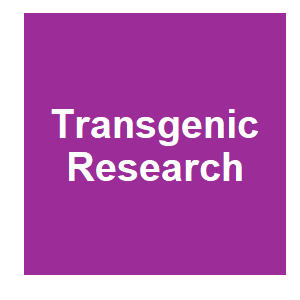
|
Lessons learned from the introduction of genetically engineered crops: relevance to gene drive deployment in AfricaH. Quemada, Transgenic Res, 2022.
The application of gene drives to achieve public health goals, such as the suppression of Anopheles gambiae populations, or altering their ability to sustain Plasmodium spp. infections, has received much attention from researchers. If successful, this genetic tool can contribute ... Keywords: cytoplasmic incompatibility, mechanisms, review, wolbachia |

|
Explainer: The Gene Drive TechnologyP. Shah, CRISPR Medicine News, 2022.
Gene drives are genetic elements that can quickly spread through populations and have nearly a 100% chance of passing the genes they carry to the next generation. Synthetic gene drive is a technology of genetic engineering through which certain desired traits can be introduced to ... Keywords: cytoplasmic incompatibility, mechanisms, review, wolbachia |

|
Symbionts and gene drive: two strategies to combat vector-borne diseaseG.-H. Wang, J. Du, C. Y. Chu, M. Madhav, G. L. Hughes and J. Champer, Trends in Genetics, 2022.
Mosquitoes bring global health problems by transmitting parasites and viruses such as malaria and dengue. Unfortunately, current insecticide-based control strategies are only moderately effective because of high cost and resistance. Thus, scalable, sustainable, and cost-effective ... Keywords: cytoplasmic incompatibility, mechanisms, review, wolbachia |

|
The spore killers, fungal meiotic driver elementsA. A. Vogan, I. Martinossi-Allibert, S. L. Ament-Velásquez, J. Svedberg and H. Johannesson, Mycologia, 2022.
During meiosis, both alleles of any given gene should have equal chances of being inherited by the progeny. There are a number of reasons why, however, this is not the case, with one of the most intriguing instances presenting itself as the phenomenon of meiotic drive. Genes that ... Keywords: cytoplasmic incompatibility, mechanisms, review, wolbachia |

|
Intervention of Modern Genetic Tools for Managing Insect Pests of Fruit CropsG. S. Miglani, S. Singh, Z. Li and R. K. Sandhu, Genetic Methods and Tools for Managing Crop Pests, 2022.
Merits and demerits of select modern genetic tools as sterile insect technique, repressible dominant lethal, engineering insect pests, transgenic crops, primary resistance management, gene silencing RNA interference, genome-editing-based methods, autocidal insect control ... Keywords: cytoplasmic incompatibility, mechanisms, review, wolbachia |

|
Newer Genetic Tools, Techniques, Vectors, Promoters, and Molecular Markers for Genetic Engineering of Herbivorous InsectsD. D. Rani, S. Subhash, H. R. Gopalkrishna and A. K. Chakravarthy, Genetic Methods and Tools for Managing Crop Pests, 2022.
Insects can transmit major infectious diseases to crop plants. Recent advances in insect genomics and transformation technology provide new strategies for the control of insect-borne pathogen transmission and insect pest management. One such strategy is the genetic modification ... Keywords: cytoplasmic incompatibility, mechanisms, review, wolbachia |

|
Facilitating the Conversation: Gene Drive ClassificationJ. Overcash and A. Golnar, Health Security, 2021.
Gene drives are an emerging technology with tremendous potential to impact public health, agriculture, and conservation. While gene drives can be described simply as selfish genetic elements (natural or engineered) that are inherited at non-Mendelian rates, upon closer ... Keywords: cytoplasmic incompatibility, mechanisms, review, wolbachia |
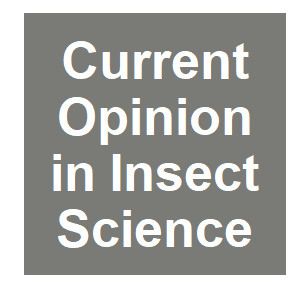
|
From Wolbachia genomics to phenotype: molecular models of cytoplasmic incompatibility must account for the multiplicity of compatibility typesA. Namias, M. Sicard, M. Weill and S. Charlat, Current Opinion in Insect Science, 2021.
Wolbachia endosymbionts commonly induce cytoplasmic incompatibility, making infected males’ sperm lethal to the embryos unless these are rescued by the same bacterium, inherited from their mother. Causal genes were recently identified but two families of mechanistic models are ... Keywords: cytoplasmic incompatibility, mechanisms, review, wolbachia |

|
Interaction Between Entomology and Gene Technology: Bt-transgenic and Gene Drives for Pests Control .J. C. Ndayıragıje, T. Özek, H. Çevik and İ. Karaca, Türk Bilim ve Mühendislik Dergisi, 3:108-115. 2021.
Pest control is the major agricultural activity for increasing crop productivity thus insuring food security. Recent pest management programs are depending too much on chemical pesticides, which are a threat to our health and environment. One of the greatest entomological ... Keywords: cytoplasmic incompatibility, mechanisms, review, wolbachia |
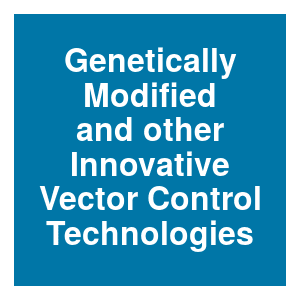
|
Perspectives into Genetic Manipulations for Control of Dengue Vector (Aedes aegypti Linnaeus, 1762) with Reference to Progress in Indian ExperimentsR. Chatterjee, S. Bhattacharya and B. K. Tyagi, Genetically Modified and other Innovative Vector Control Technologies, 2021.
Vector-borne diseases like malaria, dengue, chikungunya, Japanese encephalitis, Zika and others claim millions of lives across the globe annually, and as such their control has become an ardent necessity. Past attempts over the decades have introduced vector control through ... Keywords: cytoplasmic incompatibility, mechanisms, review, wolbachia |

|
Wolbachia: Biological Control Strategy Against Arboviral DiseasesI. Mohanty, A. Rath and R. K. Hazra, Genetically Modified and other Innovative Vector Control Technologies, 2021.
Arboviral diseases like dengue, chikungunya, and Zika are among the major causes of mortality and morbidity in human population. The limited control methods together with lack of antiviral therapies and effective vaccines have paved way for new approaches. One such approach to ... Keywords: cytoplasmic incompatibility, mechanisms, review, wolbachia |

|
Evolution of B Chromosomes: From Dispensable Parasitic Chromosomes to Essential Genomic PlayersM. Johnson Pokorná and R. Reifová, Frontiers in Genetics, 12:727570. 2021.
B chromosomes represent additional chromosomes found in many eukaryotic organisms. Their origin is not completely understood but recent genomic studies suggest that they mostly arise through rearrangements and duplications from standard chromosomes. They can occur in single or ... Keywords: cytoplasmic incompatibility, mechanisms, review, wolbachia |
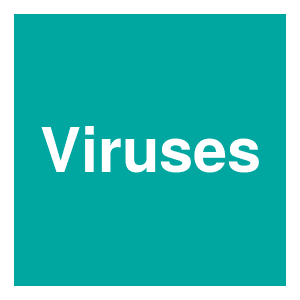
|
Towards Integrated Management of Dengue in MumbaiP. N. Paradkar, P. R. Sahasrabudhe, M. Ghag Sawant, S. Mukherjee and K. R. Blasdell, Viruses, 13. 2021.
With increasing urbanisation, the dengue disease burden is on the rise in India, especially in large cities such as Mumbai. Current dengue surveillance in Mumbai includes municipal corporation carrying out specific activities to reduce mosquito breeding sites and the use of ... Keywords: cytoplasmic incompatibility, mechanisms, review, wolbachia |
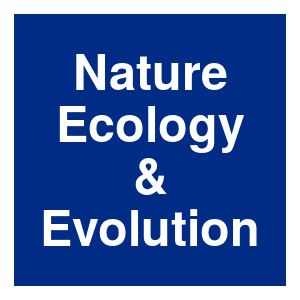
|
A flurry of sex-ratio distortersA. A. Vogan, Nature Ecology and Evolution, 2021.
Two analyses of long-read sequencing show that the Winters sex-ratio distorter of Drosophila has been a part of a recent gene family expansion, coupled to the appearance of suppressors, in a genomic arms race driven by satellite DNA. Keywords: cytoplasmic incompatibility, mechanisms, review, wolbachia |

|
Historical perspective and new avenues to control the myiasis-causing fly Cochliomyia hominivorax in Uruguay.Fresia P, Pimentel S, Iriarte V, Marques L, Durán V, Saravia A, Novas R, Basika T, Ferenczi A, Castells D, Saporiti T, Cuore U, Losiewicz S, Fernández F, Ciappesoni G, Dalla-Rizza M and M. A., Agrociencia Uruguay, 25:e974. 2021.
Mosca de la bichera’ or simply ‘bichera’ are common names given in Uruguay and the region to the primary myiasis-causing species Cochliomyia hominivorax, the New World Screwworm (NWS) fly (Diptera: Calliphoridae). Myiasis happens when dipteran larvae infest live animals at ... Keywords: cytoplasmic incompatibility, mechanisms, review, wolbachia |

|
Gene drives in malaria control: what we need to knowR. Mudziwapasi, M. C. Changara, A. Ndudzo, T. Kaseke, F. Godobo, F. L. Mtemeli, R. Shoko, F. Songwe, S. Ndlovu and S. Sandra Mlambo, Biotechnology and Biotechnological Equipment, 35:1623-1631. 2021.
Gene drives are being used to enhance a DNA sequence?s likelihood of passing between generations via sexual reproduction. Gene drives can be deployed to manipulate natural populations. They can be used to suppress populations by reducing the number of individuals in a population ... Keywords: cytoplasmic incompatibility, mechanisms, review, wolbachia |
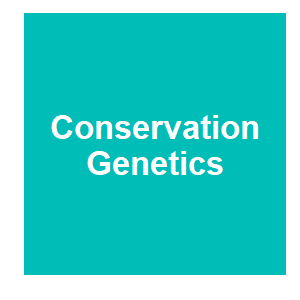
|
New developments in the field of genomic technologies and their relevance to conservation managementG. Segelbacher, M. Bosse, P. Burger, P. Galbusera, J. A. Godoy, P. Helsen, C. Hvilsom, L. Iacolina, A. Kahric, C. Manfrin, M. Nonic, D. Thizy, I. Tsvetkov, N. Veličković, C. Vilà, S. M. Wisely and E. Buzan, Conservation Genetics, 2021.
Recent technological advances in the field of genomics offer conservation managers and practitioners new tools to explore for conservation applications. Many of these tools are well developed and used by other life science fields, while others are still in development. ... Keywords: cytoplasmic incompatibility, mechanisms, review, wolbachia |

|
Molecular Mechanisms and Evolutionary Consequences of Spore Killers in AscomycetesS. Zanders and H. Johannesson, Microbiology and Molecular Biology Reviews, 2021.
In this review, we examine the fungal spore killers. These are meiotic drive elements that cheat during sexual reproduction to increase their transmission into the next generation. Spore killing has been detected in a number of ascomycete genera, including Podospora, Neurospora, ... Keywords: cytoplasmic incompatibility, mechanisms, review, wolbachia |

|
Genetic control of invasive sea lamprey in the Great LakesD. Ferreira-Martins, J. Champer, D. W. McCauley, Z. Zhang and M. F. Docker, Journal of Great Lakes Research, 2021.
The invasive sea lamprey was a significant factor in the collapse of fish stocks in the Great Lakes, and it continues to threaten the multi-billion-dollar fishing industry. Thus, substantial resources are invested annually on sea lamprey control. Current control strategies have ... Keywords: cytoplasmic incompatibility, mechanisms, review, wolbachia |

|
Wolbachia goes to work in the war on mosquitoesS. Ong, Nature, 598:S32-s34. 2021.
There are two approaches to tackling dengue with Wolbachia. The first involves releasing only modified male mosquitoes. Since 2015, this strategy has been successfully adopted in Singapore and Guangzhou, China, and in parts of the United States, such as Miami, Texas and ... Keywords: cytoplasmic incompatibility, mechanisms, review, wolbachia |
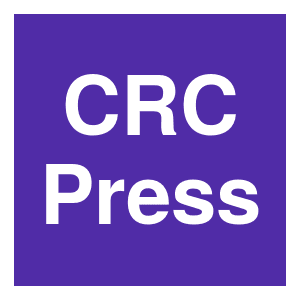
|
Genome Editing Tools and Gene Drives: A Brief Overview (1st ed.).R. Mudziwapasi, R. Chekera, C. Z. Ncube, I. Shoko, B. Ncube, T. Moyo, J. G. Chimbo, J. Dube, F. F. Mashiri, M. A. Mubani, D. Maruta, C. Chimbo, M. Masuku, R. Shoko, R. P. Nyamusamba and F. N. Jomane, CRC Press, 2021.
Genome-editing methods are becoming routine tools for molecular and cell biologists. Such tools include ZFNs, CRISPR, megaTALs and TALENs. These tools are revolutionizing the creation of precisely manipulated genomes to modify the characteristics of organisms or cells. ... Keywords: cytoplasmic incompatibility, mechanisms, review, wolbachia |
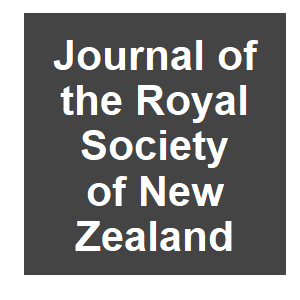
|
Gene drive and RNAi technologies: a bio-cultural review of next-generation tools for pest wasp management in New ZealandS. Palmer, P. K. Dearden, O. R. Mercier, A. King-Hunt and P. J. Lester, Journal of the Royal Society of New Zealand, 1-18. 2021.
There is a global need for novel, next-generation technologies and techniques to manage pest species. We review work on potential step-changing technologies for large landscape (>1000 hectares) pest management of social Vespula wasps. We also review M?ori perspectives on these ... Keywords: cytoplasmic incompatibility, mechanisms, review, wolbachia |

|
Genome engineering in insects for the control of vector borne diseasesV. E. Hillary and S. A. Ceasar, Progress in Molecular Biology and Translational Science, 179:197-223. 2021.
Insects cause many vector-borne infectious diseases and have become a major threat to human health. Although many control measures are undertaken, some insects are resistant to it, exacerbated by environmental changes which is a major challenge for control measures. Genetic ... Keywords: cytoplasmic incompatibility, mechanisms, review, wolbachia |

|
New report demands moratorium on gene drivesGM Watch, GM Watch, 2021.
To help the public understand what's at stake, the Germany-based NGO Save Our Seeds (SOS) has published a report, "Gene Drives: The New Dimension of Genetic Engineering", which can be downloaded as a pdf document. The report provides a scientifically founded overview of how ... Keywords: cytoplasmic incompatibility, mechanisms, review, wolbachia |

|
Gene Drive Organisms: A new dimension of genetic engineeringV. Henn and M. Imken, Save Our Seeds, 2021.
Enabled by new genetic engineering techniques such as CRISPR/Cas9, so-called gene drives have been developed in recent years that enable humans to spread new genes throughout the genome of wild animal populations. Gene drives force the inheritance of newly introduced genes to be ... Keywords: cytoplasmic incompatibility, mechanisms, review, wolbachia |

|
Mosquito transgenesis for malaria controlS. Dong, Y. Dong, M. L. Simões and G. Dimopoulos, Trends in Parasitology, 2021.
Malaria is one of the deadliest diseases. Because of the ineffectiveness of current malaria-control methods, several novel mosquito vector-based control strategies have been proposed to supplement existing control strategies. Mosquito transgenesis and gene drive have emerged as ... Keywords: cytoplasmic incompatibility, mechanisms, review, wolbachia |
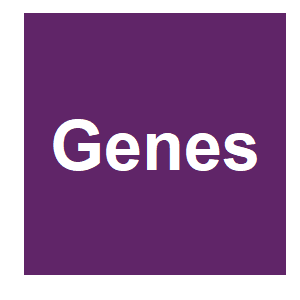
|
Flavors of Non-Random Meiotic Segregation of Autosomes and Sex ChromosomesF. Pajpach, T. Wu, L. Shearwin-Whyatt, K. Jones and F. Grützner, Genes, 12. 2021.
Segregation of chromosomes is a multistep process occurring both at mitosis and meiosis to ensure that daughter cells receive a complete set of genetic information. Critical components in the chromosome segregation include centromeres, kinetochores, components of sister chromatid ... Keywords: cytoplasmic incompatibility, mechanisms, review, wolbachia |

|
Gene drive strategies of pest control in agricultural systems: challenges and opportunitiesM. Legros, J. M. Marshall, S. Macfadyen, K. R. Hayes, A. Sheppard and L. G. Barrett, Evolutionary Applications, 2021.
Abstract Recent advances in gene editing technologies have opened new avenues for genetic pest control strategies, in particular around the use of gene drives to suppress or modify pest populations. Significant uncertainty, however, surrounds the applicability of these strategies ... Keywords: cytoplasmic incompatibility, mechanisms, review, wolbachia |

|
Combating mosquito-borne diseases using genetic control technologiesG.-H. Wang, S. Gamez, R. R. Raban, J. M. Marshall, L. Alphey, M. Li, J. L. Rasgon and O. S. Akbari, Nature Communications, 12:4388. 2021.
Mosquito-borne diseases, such as dengue and malaria, pose significant global health burdens. Unfortunately, current control methods based on insecticides and environmental maintenance have fallen short of eliminating the disease burden. Scalable, deployable, genetic-based ... Keywords: cytoplasmic incompatibility, mechanisms, review, wolbachia |
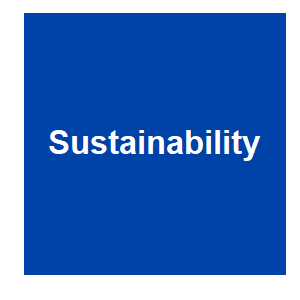
|
Genetic Technologies for Sustainable Management of Insect Pests and Disease VectorsS. Grilli, R. Galizi and C. Taxiarchi, Sustainability, 13. 2021.
Recent advancements in genetic and genome editing research, augmented by the discovery of new molecular tools such as CRISPR, have revolutionised the field of genetic engineering by enabling precise site-specific genome modifications with unprecedented ease. These technologies ... Keywords: cytoplasmic incompatibility, mechanisms, review, wolbachia |
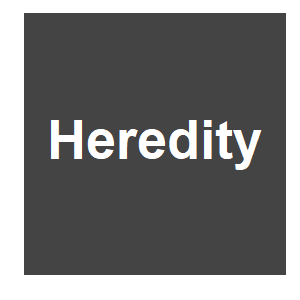
|
Mechanistically comparing reproductive manipulations caused by selfish chromosomes and bacterial symbiontsE. Dalla Benetta, O. S. Akbari and P. M. Ferree, Heredity, 126:707-716. 2021.
Insects naturally harbor a broad range of selfish agents that can manipulate their reproduction and development, often leading to host sex ratio distortion. Such effects directly benefit the spread of the selfish agents. These agents include two broad groups: bacterial symbionts ... Keywords: cytoplasmic incompatibility, mechanisms, review, wolbachia |
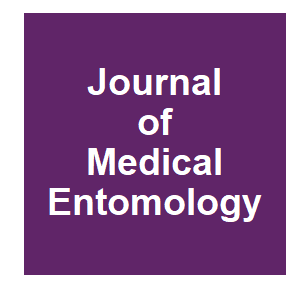
|
Current Effector and Gene-Drive Developments to Engineer Arbovirus-Resistant Aedes aegypti (Diptera: Culicidae) for a Sustainable Population Replacement Strategy in the FieldW. R. Reid, K. E. Olson and A. W. E. Franz, J Med Entomol, 2021.
Conventional mosquito control efforts based on insecticide treatments and/or the use of bednets and window curtains are currently insufficient to reduce arbovirus prevalence in affected regions. Novel, genetic strategies that are being developed involve the genetic manipulation ... Keywords: cytoplasmic incompatibility, mechanisms, review, wolbachia |

|
Sterile Insect Technique: Lessons From the PastM. Q. Benedict, Journal of Medical Entomology, 58:1974-1979. 2021.
When E.F. Knipling conceived of the release of sexually sterile insects to suppress wild populations, he laid down several fundamental qualities that characterized suitable target species—some of which mosquitoes generally violate—including high reproductive rates and large ... Keywords: cytoplasmic incompatibility, mechanisms, review, wolbachia |

|
Control of malaria-transmitting mosquitoes using gene drivesT. Nolan, Philosophical Transactions of the Royal Society B: Biological Sciences, 376:20190803. 2020.
In this article, I will discuss the relative merits of this type of gene drive, as well as barriers to its technical development and to its deployment in the field as malaria control. This article is part of the theme issue ‘Novel control strategies for mosquito-borne ... Keywords: cytoplasmic incompatibility, mechanisms, review, wolbachia |
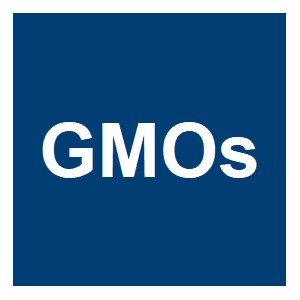
|
Engineered Gene Drives and their Value in the Control of Vector-Borne Diseases, Weeds, Pests, and Invasive SpeciesK. Hefferon and R. Herring, GMOs: Implications for Biodiversity Conservation and Ecological Processes, 2020.
Genetic engineering has created potential for moving medical and agricultural research and application frontiers forward in unprecedented ways. Despite its accepted use as a powerful tool in medical research, genetic modification and genome editing technologies remain ... Keywords: cytoplasmic incompatibility, mechanisms, review, wolbachia |

|
Brave New Planet: Reshaping Nature Through Gene DrivesE. Lander, Brave New Planet, 2020.
A new technology, called gene drives, has the power to spread any genetic instructions you wish across an entire animal or plant species in the wild. It might let us restore ecosystems ravaged by invasive species, or help species adapt to climate change. And, it might save ... Keywords: cytoplasmic incompatibility, mechanisms, review, wolbachia |

|
Research and Innovation for biodiversity: what role for gene drive research?EP Intergroup CCBSD, European Bureau of Conservation and Development, 2020.
This webinar will provide an overview of how gene drive works and the problems it seeks to solve, introduce the most advanced research projects on gene drive in the sector of public health and conservation and present the work that international and European bodies such as WHO, ... Keywords: cytoplasmic incompatibility, mechanisms, review, wolbachia |

|
Gene Drives – Mit gentechnischer Ausrottung Menschen und Natur schützen?Heinrich-Böll-Stiftung, Heinrich-Böll-Stiftung, 2020.
Am Beispiel von Gene Drives zur Malariabekämpfung soll in diesem Online-Seminar aufgezeigt werden, wie die Technologie funktioniert, wer sie entwickelt, finanziert und ihre Anwendung vorantreibt, welche Risiken sie birgt, wie in betroffenen Ländern darüber diskutiert und warum ... Keywords: cytoplasmic incompatibility, mechanisms, review, wolbachia |

|
Vector-Focused Approaches to Curb Malaria Transmission in the Brazilian Amazon: An Overview of Current and Future Challenges and StrategiesE. M. Rocha, R. D. Katak, J. C. de Oliveira, M. D. Araujo, B. C. Carlos, R. Galizi, F. Tripet, O. Marinotti and J. A. Souza, Tropical Medicine and Infectious Disease, 5. 2020.
Here we present an overview on both conventional and novel promising vector-focused tools to curb malaria transmission in the Brazilian Amazon. If well designed and employed, vector-based approaches may improve the implementation of malaria-control programs, particularly in ... Keywords: cytoplasmic incompatibility, mechanisms, review, wolbachia |
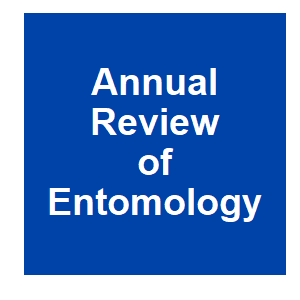
|
Engineering the Composition and Fate of Wild Populations with Gene DriveB. A. Hay, G. Oberhofer and M. Guo, Annual Review of Entomology, 2020.
We describe technologies under consideration, progress that has been made, and remaining technological hurdles, particularly with respect to evolutionary stability and our ability to control the spread and ultimate fate of genes introduced into populations. Keywords: cytoplasmic incompatibility, mechanisms, review, wolbachia |

|
Microbiome Innovation in Agriculture: Development of Microbial Based Tools for Insect Pest ManagementM. Qadri, S. Short, K. Gast, J. Hernandez and A. C.-N. Wong, Frontiers in Sustainable Food Systems, 4. 2020.
This review emphasizes the potential and use of microbes in sustainable insect pest management. We first review the diverse insect traits shaped by insect-microbe associations that span nutrition, immunity, ecological interactions with natural enemy, insecticide resistance, and ... Keywords: cytoplasmic incompatibility, mechanisms, review, wolbachia |
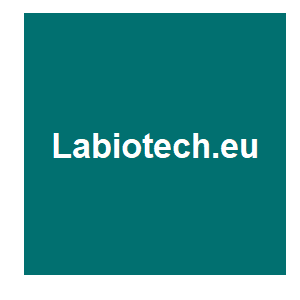
|
The Evolving Arsenal Against Mosquito-Born DiseasesJ. Smith, Labiotech.eu, 2020.
As the global climate continues to warm, disease-spreading mosquitoes such as Aedes aegypti are expected to establish themselves in the US and Europe. Keywords: cytoplasmic incompatibility, mechanisms, review, wolbachia |

|
Prospects and Pitfalls: Next-Generation Tools to Control Mosquito-Transmitted DiseaseE. P. Caragata, S. Dong, Y. Dong, M. L. Simões, C. V. Tikhe and G. Dimopoulos, Annual Review of Microbiology, 74:455-475. 2020.
A diverse array of next-generation tools has been designed to eliminate mosquito populations or to replace them with mosquitoes that are less capable of transmitting key pathogens. Keywords: cytoplasmic incompatibility, mechanisms, review, wolbachia |
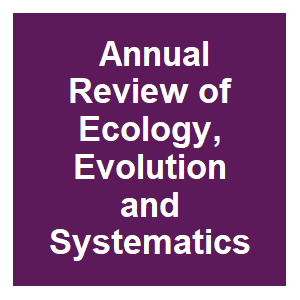
|
Gene Drive Dynamics in Natural Populations: The Importance of Density Dependence, Space, and SexS. Dhole, A. L. Lloyd and F. Gould, Annual Review of Ecology, Evolution, and Systematics, 51:505-531. 2020.
The spread of synthetic gene drives is often discussed in the context of panmictic populations connected by gene flow and described with simple deterministic models. Under such assumptions, an entire species could be altered by releasing a single individual carrying an invasive ... Keywords: cytoplasmic incompatibility, mechanisms, review, wolbachia |
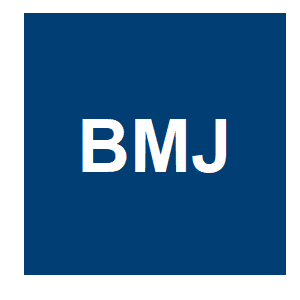
|
Fighting malaria with genetically modified mosquitoesE. Nakkazi, BMJ, 370:m2172. 2020.
Could a bold project to genetically engineer mosquitoes curb the scourge of malaria in Africa? Finding out will require careful science—and public acceptance, writes Esther Nakkazi Keywords: cytoplasmic incompatibility, mechanisms, review, wolbachia |

|
Gene Drive Webinars -ENSSER, CSS, VDW and SCEuropean Network of Scientists for Social and Environmental Responsibility, , 2020.
This series of 5 Webinars by some of the authors of the interdisciplinary Gene Drive Report (2019) and were organised by four organisations of independent scientists: the European Network of Scientists for Social and Environmental Responsibility (ENSSER), Critical Scientists ... Keywords: cytoplasmic incompatibility, mechanisms, review, wolbachia |

|
Meiotic driveA. N. Srinivasa and S. E. Zanders, Current Biology, 30:R627-R629. 2020.
What is meiotic drive? Diploid organisms, like you, have two copies of each autosomal chromosome, one from each parent. Sometimes organisms are heterozygous at a given region, meaning they carry different copies (or alleles) of the DNA sequence on the two homologous chromosomes. ... Keywords: cytoplasmic incompatibility, mechanisms, review, wolbachia |

|
Gene drives: benefits, risks, and possible applicationsA. Deplazes-Zemp, U. Grossniklaus, F. Lefort, P. Müller, J. Romeis, A. Rüegsegger, N. Schoenenberger and E. Spehn, Swiss Academies Factsheets, 15. 2020.Gene drives are genetic elements that skew the pattern of inheritance of a given characteristic in sexually reproducing organisms. They can be used to spread a characteristic that can alter or even reduce the numbers of individuals in wild populations of a certain species. As ... Keywords: cytoplasmic incompatibility, mechanisms, review, wolbachia |

|
CRISPR/Cas9 gene drive technology to control transmission of vector-borne parasitic infectionsM. Nateghi Rostami, Parasite Immunology, preprint:e12762. 2020.
Gene drive is the process of copying of an endonuclease-containing cassette that leads to increased frequency of inheritance of the desired traits in a targeted population. CRISPR/Cas9 technology is advancing genetic manipulation of insects in the field of gene drive ... Keywords: cytoplasmic incompatibility, mechanisms, review, wolbachia |

|
Engineered Gene Drives for Pest ManagementG. Miglani, Biotechnology for Plant Disease Diagnosis and Management, 2020.
Genes in sexually reproducing organisms normally have, on average, a 50% chance of being inherited, but some genes have a higher chance of being inherited. These genes can increase in relative frequency in a population even if they reduce the odds that each organism will ... Keywords: cytoplasmic incompatibility, mechanisms, review, wolbachia |

|
America’s Never-Ending Battle Against Flesh-Eating WormsS. Zhang, The Atlantic, 2020.
The United States Department of Agriculture undertook what would ultimately become an immense, multidecade effort to wipe out the screwworms, first in the U.S. and then in Mexico and Central America—all the way down to the narrow strip of land that is the Isthmus of Panama. The ... Keywords: cytoplasmic incompatibility, mechanisms, review, wolbachia |

|
Le forçage génétique (gène drive) et ses applicationsV. Courtier-Orgogozo, Bulletin de l'Académie Vétérinaire de France, 172:94-98. 2020.
Gene drive is a new genetic engineering technology that has been developed over the past five years and that allows genetic modifications to spread rapidly in natural populations. Potential applications are numerous, for public health issues, agriculture and conservation biology. ... Keywords: cytoplasmic incompatibility, mechanisms, review, wolbachia |

|
GeneTip project results published in fullC. Then, Testbiotech, 2020.
The GeneTip research project was a joint enterprise carried out from 2017 until 2019 by the Universities of Bremen and Vechta, the University of Natural Resources and Life Sciences, Vienna and Testbiotech, Munich. The researchers focused on risks associated with the spread of ... Keywords: cytoplasmic incompatibility, mechanisms, review, wolbachia |

|
Genome engineering in insects: focus on the CRISPR/Cas9 systemHillary, V. Edwin Ceasar, Stanislaus Antony Ignacimuthu, S., Genome Engineering via CRISPR-Cas9 System, 2020.
Genome engineering is a precise tool used to alter the genome of desired organism. Zinc finger nuclease (ZFN), transcription activator-like effector nucleases (TALENs) and clustered regularly interspaced short palindromic repeats (CRISPR), and the CRISPR-associated RNA guided ... Keywords: cytoplasmic incompatibility, mechanisms, review, wolbachia |

|
Genetics-based methods for agricultural insect pest managementN. Alphey and M. B. Bonsall, Agricultural and Forest Entomology, 20:131-140. 2018.
Abstract The sterile insect technique is an area-wide pest control method that reduces agricultural pest populations by releasing mass-reared sterile insects, which then compete for mates with wild insects. Contemporary genetics-based technologies use insects that are homozygous ... Keywords: cytoplasmic incompatibility, mechanisms, review, wolbachia |

|
What’s the story with genetic pest management (GPM)?K. Guthrie, Predator Free NZ, 2017.
Breakthrough genetic technologies are likely to play a key role in achieving a predator-free future. But it’s important that we understand what the various technologies are now – as they’re being developed – not when they’re about to be implemented. We need to debate ... Keywords: cytoplasmic incompatibility, mechanisms, review, wolbachia |

|
TSETSE GENETICS: Contributions to Biology, Systematics, and Control of Tsetse FliesR. H. Gooding and E. S. Krafsur, Annual Review of Entomology, 50:101-123. 2005.
Tsetse flies (Diptera: Glossinidae) constitute a small, ancient taxon of exclusively hematophagous insects that reproduce slowly and viviparously. Because tsetse flies are the only vectors of pathogenic African trypanosomes, they are a potent and constant threat to humans and ... Keywords: cytoplasmic incompatibility, mechanisms, review, wolbachia |

Contact
David O’Brochta
Foundation for the
National Institutes of Health
geneconvenevi@fnih.org
RSS

